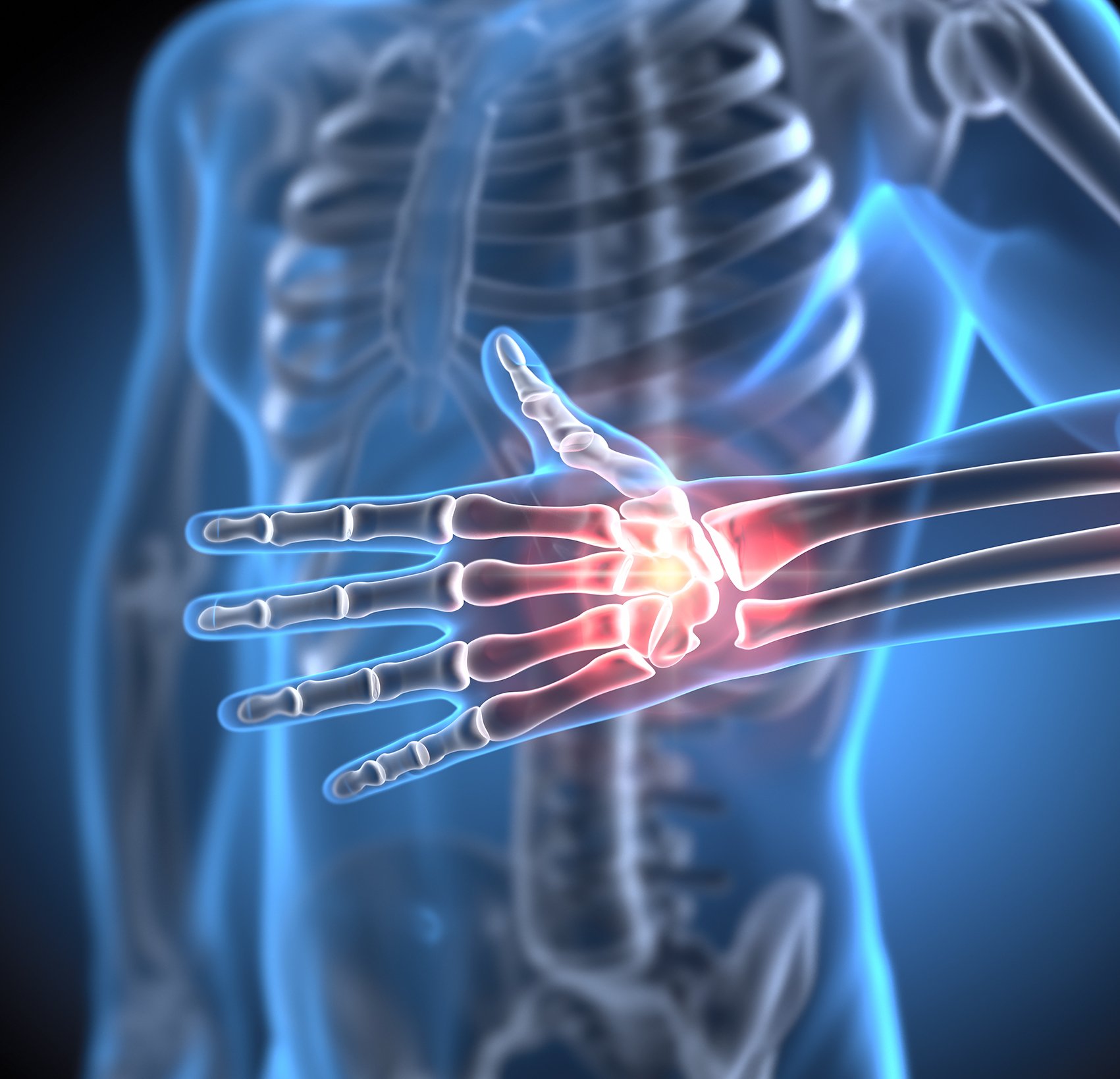Wrist Conditions
About the Wrist
The wrist is a complex joint at the end of the arm that is vital for some of the complex movements we perform every day. It is a highly functional joint that both flexes and extends, as well as rotates. There are a number of structures within the wrist which may be injured.
The Cartilage – Osteoarthritis
In order for the wrist to move freely, the bony components of hinge joint (radius above, carpal bones like the scaphoid, lunate and triquetrum below) must have smooth movement. This friction free gliding is facilitated by cartilage – which covers the bone. Unfortunately, cartilage does not regenerate very well, and over time natural wear and tear results in thinning, and eventual loss of the cartilage in your wrist. In some cases, the loss of cartilage may have occurred because of a traumatic injury in the past. Eventually, this leads to bone on bone articulation, and is known as osteoarthritis. It can result in both pain and stiffness in the wrist. There are non-operative ways to treat arthritis such as steroid injections and physiotherapy, as well as surgical treatments like partial or total wrist fusions.
The Distal Ulna – Impingement
Sometimes, the ulna (the thinner of the two long bones of the wrist) is too long. Most commonly, this is due to a fracture of the wrist. If this happens, patients can develop impingement as the ulna abuts or hits the triquetrum above it. Surgery can be very effective in shortening the ulna, and removing this impingement.
The Nerve – Carpel Tunnel Syndrome
The Median Nerve controls some of the muscles of your hand, as well as sensation of the thumb, index and middle fingers. It is often compressed by a band of tissue (the flexor retinaculum) which is known as Carpal Tunnel Syndrome. This can lead to pain, weakness and numbness in the hand and thumb. Whilst splinting may be helpful in the short term, release of the carpal tunnel surgically is generally very effective in eliminating symptoms.
Ganglions
A ganglion is a cyst that arises commonly in the hand or wrist. Usually they are painless and benign, and don’t require any treatment. However, sometimes they grow to be large enough to cause irritation or compression or nerves. In that case, steroid injections can help, but otherwise surgical excision is effective.


